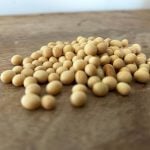CNS Canada — While just about everyone agrees the plunging price of oil will have a bearish effect on commodity prices, the size and impact of that fall seems to vary.
As recently as Nov. 4, crude oil prices were $48.64 a barrel, but since then have fallen to US$37.86, as of Wednesday’s opening.
Some analysts seem to stick with the adage that “people gotta eat,” which will slowly but surely enable markets to chew through massive world supplies of grains and oilseeds — and the knowledge that oil prices were under US$10 a barrel during the early 2000s, but the world kept turning.
Read Also

U.S. livestock: Cattle, hog futures rise on first WASDE since September
Chicago cattle and hog futures made modest gains on Friday after the USDA released its first World Agricultural Supply and…
On the other side of the coin, this recent drop in crude comes as the U.S. is still recovering from the recession of 2008 and is already suffering from export problems. The strength of the U.S. dollar has made sales of corn and wheat too expensive in the minds of many international buyers, who have simply turned to South America and the Black Sea region for cheaper supplies.
There are also widespread expectations that the U.S. Federal Reserve will hike interest rates in that country next week.
It’s all adding up to something that could prompt another recession in the U.S., according to Errol Anderson of ProMarket Communications in Calgary.
“The risks to me are high; even though the Canadian dollar may be going down to 72.5 (U.S. cents), there is sort of a day of reckoning coming in the U.S.”
The sudden drop in oil over the past few days has already had noticeable effects, he said.
“Yesterday (Monday) soyoil dropped and the cattle board dropped, (after) crude oil dropped,” he said. “Crude oil is the psychological leader.”
If crude continues its descent, Anderson said, the situation will just get worse.
“Products like soyoil and palm oil will actually go down even though we have the El Nino effect. Because once we get improved weather conditions — the fundamentals will fall back further, which is a risk for canola too,” he said.
The president of Chicago-based Ag Resource Co. agrees commodities will remain under pressure.
Overproduction is already making life difficult for stakeholders, Dan Basse said, adding that the world needs to cut 20 million acres of grain production in the next three years just to balance things out.
“If they don’t, it gets even worse,” he said.
As for the big picture, Basse said, we’ve been here before.
“Back in the early 2000s, oil was trading for under $10 a barrel, so some of us would argue the price of oil is still relatively expensive,” he said, adding weak prices and low margins are likely here for a while.
“Due to the investments that were put in place during the commodity supercycle which lasted from 2005 to 2013, it’s not (a case of) slowing demand; it’s just overproduction.”
While the low price of oil also makes corn-based ethanol less attractive, Basse said that shouldn’t affect its usage.
“The U.S. has mandates. They just raised that to 14.5 billion gallons in 2016. So it (ethanol) is mandated regardless of the price,” he pointed out.
For Anderson, the signs point to a conflagration of economic factors that could send equity markets and commodities tumbling even more.
“It could hit a crossroads before Christmas,” he said. “It will be interesting to see what happens next week.”
The situation may change if the Fed rethinks its strategy, he added.
“Crude is having a big impact on U.S. stock markets, so it may cause the U.S. Federal Reserve to back away from the rate hike.”
— Dave Sims writes for Commodity News Service Canada, a Winnipeg company specializing in grain and commodity market reporting.
















